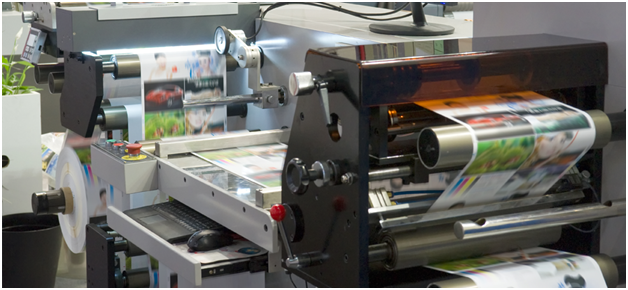A Comprehensive Guide to Recognizing Litho Printing Techniques
The globe of litho printing, a method stemming from the late 18th century, is an interesting blend of history, art, technology and scientific research. This extensive overview will untangle the intricacies of this printing technique, from the structure of litho inks to the difficulties faced in contemporary applications. As we venture right into the complexities of lithography, the significance of automation and sustainability in guaranteeing its future significance becomes progressively clear. Remain with us as we trip into the captivating world of litho printing.
The Historic Advancement of Litho Printing
The historic trajectory of litho printing, an essential advancement in the realm of interaction, is a fascinating story of human resourcefulness. Birthed in the late 18th century by Alois Senefelder, this strategy was originally an affordable technique of releasing theatrical works. Lithography, acquired from the Greek words for 'stone' and 'to write', made use of a smooth stone surface area to move images onto paper. The procedure progressed with the development of the rotary press, which greatly boosted performance (litho printing). In the 20th century, the advancement of balanced out lithography reinvented the industry, enabling automation of top notch prints. Each phase of litho printing's advancement showcases humankind's relentless pursuit of efficiency and quality in aesthetic communication.
Deciphering the Scientific Research Behind Litho Printing Inks
Moving on in the exploration of litho printing methods, the emphasis currently changes to the science behind litho printing inks. The structure of these inks, their drying out process, and color mixing methods develop the foundation of this intricate art type. Recognizing these elements is essential to understanding the craft and achieving the preferred print outcomes.
Make-up of Litho Inks
In lithographic printing, the essential function of litho inks can not be overstated. Pigments, the color-providing elements, are finely ground bits put on hold in the automobile, a liquid that brings the pigment onto the printing surface. Each part plays a vital component in the final print's high quality, making the accurate formulation of litho inks an intricate scientific research.
Ink Drying Process
From the structure of litho inks, focus turns to the fascinating process of ink drying out. 2 main approaches are made use of in litho printing: oxidative drying and absorption. Absorption, on the other hand, involves the ink leaking into the paper fibers, which is a quicker process yet can lead to much less lively colors.
Color Combining Methods
While the drying out process plays an essential function in litho printing, the science of color blending techniques holds equal importance. The science behind litho printing inks likewise takes right into account the transparency of the ink, which impacts just how colors overlay and mix.
The Art and Layout Aspects in Litho Printing
Litho printing breathes life into art and layout with its one-of-a-kind elements. The process involves producing a go now picture on a lithographic sedimentary rock plate or metal plate with a smooth surface area. The photo is after that printed onto a tool, generally paper, by moving the ink from the plate. What collections litho printing apart is its ability to duplicate intricate designs with high fidelity, making the output almost the same to the initial art work. This is attained via using different line methods such as stippling, hatching, and cross-hatching, which allow for a variety of tonal results. Moreover, litho printing fits a variety of colors, enabling artists to produce vibrant and vibrant prints. This combination of precision and convenience makes litho printing a recommended choice for lots of artists and designers.
Modern Applications of Litho Printing Methods
Litho printing techniques have actually found extensive use in the contemporary business market. Its influence and relevance remain to grow with the advent of brand-new innovations and technologies in the area. This area will certainly check out these modern linked here applications and the transformative duty they play in the printing sector.
Business Litho Printing Uses
Litho printing continues to be an essential component of the business field. High-volume printing tasks, such as the production of publications, newspapers, and product packaging, count on litho printing for its ability to deliver premium picture quality and expense performance. Litho printing also gives a broad color range, exceptional to that of electronic printing.
Developments in Litho Printing
Pushing the borders of standard techniques, contemporary advancements have fueled a host of developments in litho printing. One famous development is digital litho printing, which incorporates the merits of digital modern technology with litho's high-grade outcome. These advancements underscore the enduring significance of litho printing in the modern-day globe.
Checking out the Process of Litho Printing: Detailed

Challenges and Solutions in Contemporary Litho Printing

In spite of the precision and practice that litho printing proudly maintains, it is not without its collection of contemporary difficulties. Digital litho printing allows for cost-efficient brief runs and simple personalization, dealing with the concern of variable information. Thus, while there are difficulties, the litho printing market is proactively adapting to fulfill them head-on, guaranteeing its significance in the future.
Final thought
In final thought, litho printing, with its abundant history and scientific details, holds a significant area in the print industry. The future of litho printing hinges on its ability to adapt to these changing needs, affirming its long-lasting value in an evolving market.
